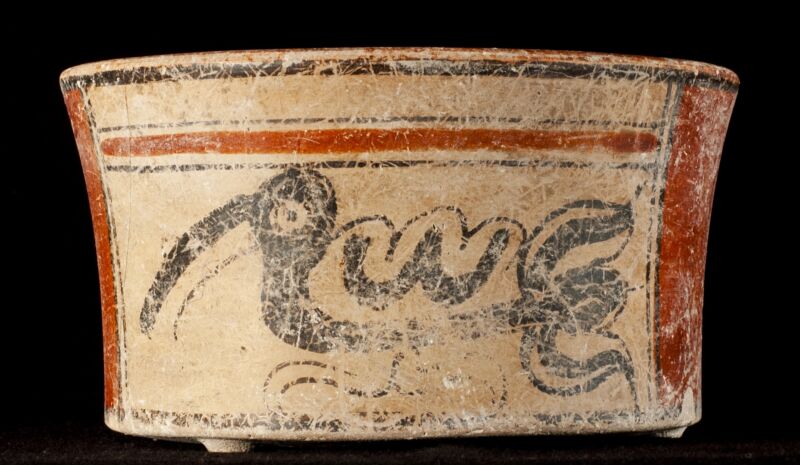
Enlarge / This painted vessel, which depicts a bird, is one of two found in the ambassador’s grave. (credit: Cambridge University Press)
The bones of a Maya ambassador suggest a life of privilege but not necessarily comfort and ease, even though he was a high-ranking official born into a powerful family. His skeleton also finishes the story started in the hieroglyphic inscriptions on his tomb, revealing his greatest achievement and his fall from power after political winds shifted.
Look upon my works, ye mighty, and despair
In late 726 CE, diplomat Apoch’Waal’s fortunes were on the rise. He had inherited his father’s position as a lakam, or standard-bearer: a diplomatic emissary for the King of Calakmul. As a sign of his office, Apoch’Waal carried a banner on a pole while he walked hundreds of miles to broker alliances between the most powerful dynasties in the Maya world. When he spoke or smiled, the jade and pyrite inlays in his front teeth also revealed his high status.
That summer, Apoch’Waal took up his banner and set out on a 560-kilometer trek to Copán, in modern-day Honduras, to forge ties between the king of Copán and his own king. The successful alliance between kings was a high point in Apoch’Waal’s career, and he commemorated it a few months later by building a small ceremonial platform and temple for himself in his hometown of El Palmar, near Calakmul.





